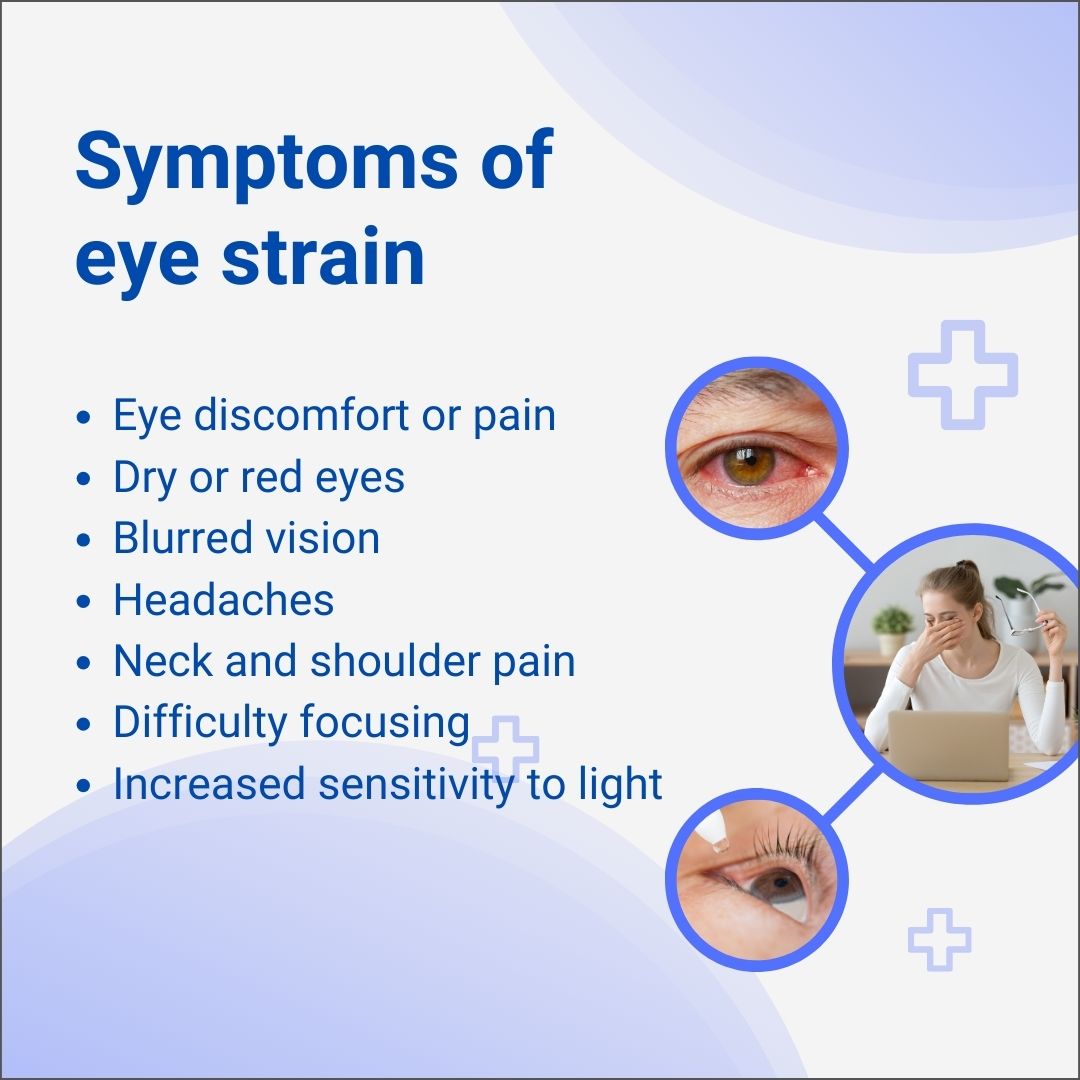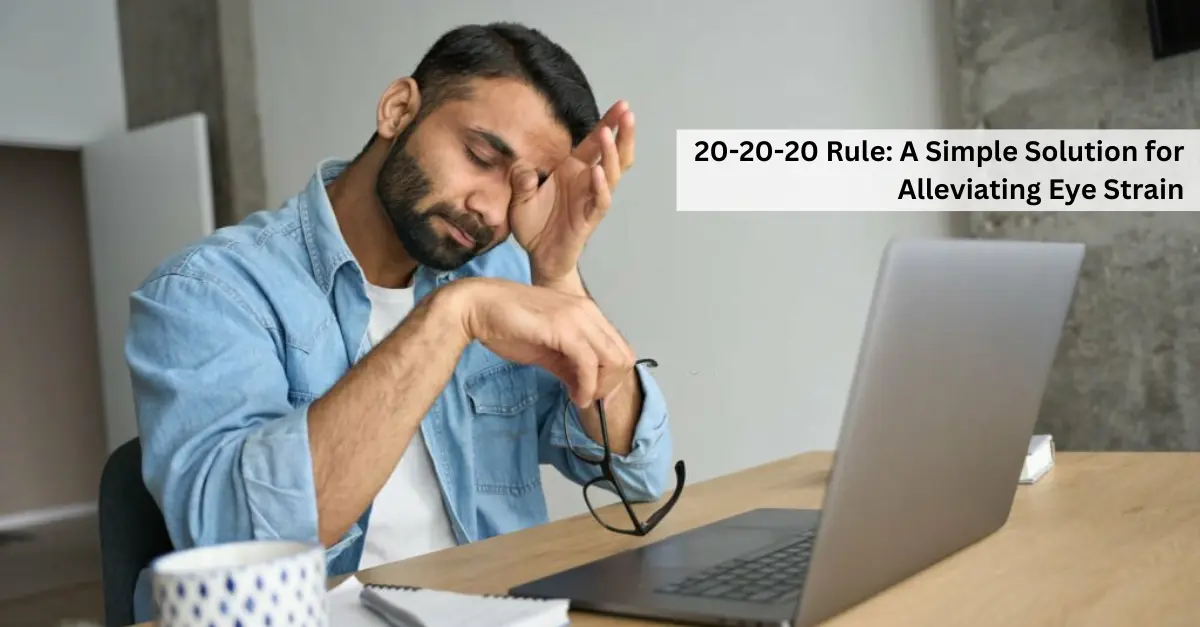In today's digital age, we spend a significant portion of our day staring at screens. Whether it's working on a computer, scrolling through our smartphones, or binge-watching our favorite shows, our eyes are constantly exposed to digital displays. While this technology has undoubtedly improved our lives in many ways, it has also given rise to a common problem: eye strain. Fortunately, there's a simple and effective solution known as the 20-20-20 rule that can help alleviate eye strain and promote better eye health. In this article, we will explore what eye strain is, its causes, and how the 20-20-20 rule can provide relief.
Understanding Eye Strain
Eye strain, also known as digital eye strain or computer vision syndrome, is a common condition characterized by discomfort, dryness, fatigue, and irritation of the eyes. It often occurs after extended periods of screen time, but it can also result from other visually demanding tasks, such as reading for extended periods or performing intricate detail work.
Symptoms of eye strain may include:
a) Eye discomfort or pain
b) Dry or red eyes
c) Blurred vision
d) Headaches
e) Neck and shoulder pain
f) Difficulty focusing
g) Increased sensitivity to light
Eye strain can affect anyone who spends a significant amount of time in front of screens, from students and office workers to gamers and avid readers. The good news is that there are several strategies to combat this issue, with the 20-20-20 rule being one of the most effective and easy-to-implement methods.

If you experience persistent or severe eye strain, it's a good idea to consult with an Eye care specialist for a comprehensive eye examination to rule out any underlying eye conditions
Causes of Eye Strain
To understand how the 20-20-20 rule works, it's essential to know the causes of eye strain. Several factors contribute to this discomfort, including:
Prolonged screen time: Staring at a screen for extended periods without breaks can lead to eye fatigue. This is exacerbated by the fact that we often blink less frequently when using digital devices, leading to dry eyes.
Blue light exposure: Screens emit blue light, which can interfere with our sleep patterns and cause eye strain. Prolonged exposure to blue light can lead to digital eye strain and disrupt our circadian rhythm.
Poor screen ergonomics: Incorrect screen placement, improper lighting, and uncomfortable seating can all contribute to eye strain. Maintaining a proper workspace setup is crucial for eye health.
Unhealthy visual habits: Focusing on a screen or a book for an extended time without breaks can put additional strain on the eye's focusing muscles, leading to discomfort.
What is 20-20-20 Rule?
The 20-20-20 rule is a straightforward and effective technique for preventing and relieving eye strain. It encourages individuals to take regular breaks from screen time to give their eyes a much-needed rest. Here's how it works:
- Every 20 minutes, take a 20-second break.
- During your 20-second break, focus on something at least 20 feet away from you.
By following this rule, you can reduce eye strain and discomfort significantly. The idea behind the 20-20-20 rule is to break the cycle of continuous screen exposure and allow your eye muscles to relax.
How Does the 20-20-20 Rule Help Alleviate Eye Strain?
Blinking and Tear Production: Staring at screens often leads to reduced blinking, which can cause dry eyes. Taking a 20-second break allows you to blink more frequently, promoting tear production and keeping your eyes moist.
Eye Muscle Relaxation: The 20-20-20 rule encourages you to shift your focus to something in the distance. This helps relax the ciliary muscles responsible for adjusting the lens of the eye to focus on near objects. Giving these muscles a break can reduce eye strain.
Circulation Improvement: Looking at a distant object encourages you to change your gaze and move your eyes. This movement promotes better circulation within the eyes and helps reduce fatigue.
Reduced Blue Light Exposure: Taking breaks also means spending less time exposed to the blue light emitted by screens. This can improve sleep patterns and reduce digital eye strain.
Incorporating the 20-20-20 Rule into Your Routine
Now that you understand the benefits of the 20-20-20 rule, let's discuss how you can incorporate it into your daily routine:
Set a Timer: Use your phone or computer to set a timer for every 20 minutes. When the timer goes off, it's time for a break.
Follow the Rule: During your 20-second break, focus on something in the distance. You can look out of a window, at a distant object in your room, or simply close your eyes and visualize a distant scene.
Stretch and Move: Use this break not only to rest your eyes but also to stretch your body and change your posture. This can help reduce overall physical strain.
Hydrate: Sip some water during your break to help keep your eyes and body hydrated.
Adjust Your Workspace: Ensure that your computer screen is at eye level and that you have proper lighting to reduce glare. An ergonomic setup can further minimize the risk of eye strain.
Follow the 20-20-20 rule consistently, especially during long work or study sessions.
Benefits of the 20-20-20 Rule
Incorporating the 20-20-20 rule into your daily routine can offer a wide range of benefits:
Reduced Eye Strain: The primary benefit is, of course, the alleviation of eye strain and discomfort associated with prolonged screen time.
Increased Productivity: Regular breaks can improve focus and productivity by preventing mental fatigue and maintaining visual comfort.
Better Eye Health: By taking care of your eyes and preventing eye strain, you contribute to long-term eye health.
Improved Comfort: You'll experience less discomfort, including dryness, itching, and redness.
Reduced Risk of Computer Vision Syndrome: Consistently following the 20-20-20 rule can reduce the risk of developing computer vision syndrome, a condition associated with prolonged digital device use.
Enhanced Sleep Patterns: Reducing blue light exposure can help regulate your sleep-wake cycle and improve the quality of your sleep.
Preventative Measure: Even if you don't currently experience eye strain, incorporating the 20-20-20 rule can serve as a preventative measure to keep your eyes healthy.
In a world where digital screens are an integral part of our daily lives, eye strain has become a common concern. The 20-20-20 rule offers a simple yet effective solution to alleviate eye discomfort and promote better eye health. By taking regular breaks, focusing on distant objects, and following good screen ergonomics, you can reduce the risk of eye strain and enjoy more comfortable and productive screen time. Remember, your eyes are precious, and taking care of them should be a priority. So, start implementing the 20-20-20 rule today and give your eyes the break they deserve.
If you experience persistent or severe eye strain, it's a good idea to consult with an Eye care specialist for a comprehensive eye examination to rule out any underlying eye conditions.
Related Blog Articles:
1. Screen Time and Children's Mental Health: Finding a Balance
2. Tips for Preventing Computer Vision Syndrome in Children and Adults
.webp)














